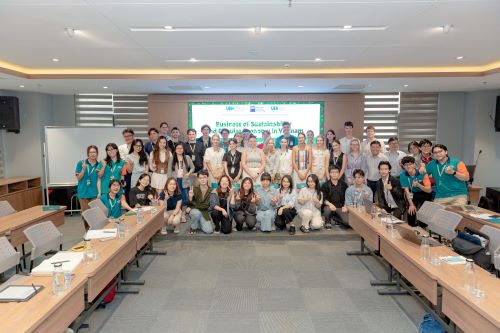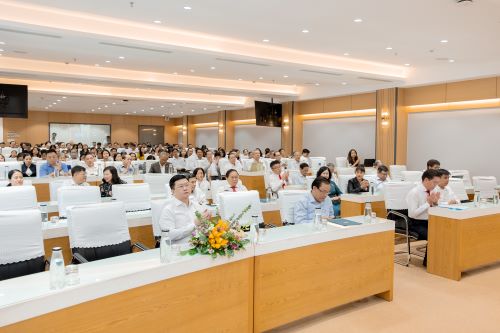
Administrative and Judicial Procedure Reform in Vietnamese Courts within the Digital Transformation Period
The impacts of the Fourth Industrial Revolution have been posing new opportunities and challenges for our state's judiciary. The administrative and judicial procedures in the operation of traditional courts have become obsolete towards facing the formation of the new legal relations in the context of digital transformation. The application of technology in judicial reform in Vietnam with the Smart Court model is an undeniable trend. However, the trial operation of the Court cannot meet the new requirements of a new court model if the administrative and judicial procedures that have become inadequate are not improved synchronously. This article points out a few problems in the reform of judicial administrative procedures in court operations as well as proposes solutions to contribute towards building a modern and integrity court system.

The actual situation of courts applying online adjudication in Vietnam
With the goal of strengthening ‘the application of information technology towards building an electronic court in association with accelerating the reform of administrative and judicial procedures at the Court’ (Chief Justice of the Supreme People's Court, 2020), since 2005, the entire People's Court system has applied certain administrative and judicial procedure reform measures listed as issuing a resolution on publishing judgments online, promulgating a Code of Ethics and Conducts of the Judge and so on and achieved diverse achievements in terms of the Court's operational efficiency. On the other hand, it is also inevitable that some limitations appear. Specifically, the form of submitting online lawsuit petitions electronically through the Court's portal has been developed. However, the regulations related to procedures have not met the proposed effects after being tested in practice on a narrow scale in a few courts (Quang, 2020). The problem comes not only from the unsecured information infrastructure but also with the requirement for digital signatures for users of the online lawsuit service. Usually, new businesses can meet this requirement because they are subjects that often have to perform administrative procedures that need digital signatures. In contrast, individuals are more hesitant to choose this service due to the problem of procedures and costs to own a digital signature. In addition to the above-mentioned reform measures, the establishment of an ‘online courtroom’ in Vietnam is a trend that is being directed. However, a new operating model, like an advanced machine system, requires accompanying rules – an operational programmer, which also catches up to ensure that the model operates efficiently and effectively. Nevertheless, the current administrative and judicial regulations related to adjudication activities are the same as those applied to traditional trials whereas the relations related to adjudication activities are and will be digitized and electrified step by step. One of the procedural principles that illustrate this issue is the principle of direct and verbal adjudication (BLTTDS 2015, Article 225; LTTHC 2015, Article 152; BLTTHS 2015, Article 250). Accordingly, the trial must be oral and conducted in the courtroom, this principle shows that the current legal framework still stops at the traditional trial space. How will relevant legal provisions be adjusted to be ready for the change of legal relations in cyberspace?

Online trial at the People's Court of Thu Duc City. Photo source: Vietnam Plus
Some proposals to improve the reform of administrative and judicial procedures in the digital transformation period
Answering the above questions, this article proposes some appropriate solutions to contribute to the process of enhancing operational efficiency and transparency, publicity and consistency of the Court system. Firstly, regarding the online filing method, the courts of first instance should be the first place to mainly focus the petitions of individual citizens, or organizations and businesses; therefore, this method needs to be implemented not only at provincial People's Courts but also at district People's Courts through the separate website of each Court. In addition, the cost to use digital signatures as well as to renew each year should be determined at a level that is more suitable for the individual citizen. The Court system can even move towards a free public service mechanism, for example, instead of requiring digital signatures for identification, it can combine citizen identification numbers and biometric technology (facial recognition) to ensure high security in account registration on the court's website. In addition, the website needs to integrate clearer guiding information, in the form of short but detailed videos with specific information regarding procedural law in parallel in the steps of proceeding to file a lawsuit. This will help reduce the number of electronic lawsuits filed incorrectly, ensuring more benefits for the citizens themselves.
Secondly, in terms of the issue of setting up an e-Court, one of the important premise is that the facilities, equipped with modern and scientific working facilities, meet the basic technological requirements of the E-Court; at the same time, improving the quality and efficiency of work related to Judicial Administration for the Judiciary. In parallel with the investment in upgrading the physical infrastructure system, the qualifications and capacity in the field of information technology of the staff working in the administrative and judicial work of the local court units as well as Judicial practice needs to be enhanced through training sessions, testing the use of the new online system. In addition, the law needs to be perfected to meet the requirements set forth by the Fourth Industrial Revolution in judicial proceedings as well as to solve the challenges posed by the Covid-19 epidemic in today's time. For example, the concept of ‘direct trial’ needs to be redefined with scope not only in the traditional courtroom but also in cyberspace, allowing some parties to the proceedings to attend the Court through online form without having to go to Court in person. More specifically, with the legal provisions related to the attendance period in the presence and absence of procedure participants, in the Online Court, court participants at the request of the Court can adopt the supports from The Justice Department listed as scanning the summons and sending it to the Secretary's email/Zalo/Viber for attendance. What is more, today, the trend of digitizing citizens' personal information puts the private data of litigants at risk of being disclosed during the proceedings due to carelessness or intentional opinion of judicial administrative officers or employees working in the Court listed as cleaning staff, security guards and so on. In order to avoid the above situation, a new code of ethics also needs to be developed to respond to the change of procedural relations in cyberspace and protect the privacy of legal participants besides the effective deterrent sanctions. The obligation to keep information confidential for judicial officers and employees should be respected and confirmed specifically in the code of conduct of court staff.
In this research paper, the judicial procedures have been and are being oriented to adapt to the trend of technology and modernization of the world. However, in Vietnam, the reality shows that from facilities, equipment to legal regulations, there are still a number of shortcomings: only meeting the requirements of traditional proceedings and not being ready as a foundation for the new judicial system model of the digital age. Therefore, the judicial reform in Vietnam in general as well as the reform of judicial administrative procedures in the operation of the Court in particular needs to be carried out more quickly and synchronously. At the same time, citizens will have higher trust in the judiciary when the legal process is more unified, clear and transparent, demonstrating the integrity of a modern and open court system.
Please refer to the full research of “Administrative and Judicial Procedure Reform in Vietnamese Courts within the Digital Transformation Period” here. Author: MsC. Trần Diệu My, Law Faculty, UEH School of Economics, Laws and State Management.
This article is in series spreading researches and applied knowledge from UEH with “Research Contribution For All – Nghiên Cứu Vì Cộng Đồng” message, UEH would like to invite dear readers to look forwards to Newsletter ECONOMY NUMBER #40 “COMBINING VIETNAM'S DIGITAL GAP TOGETHER DIGITAL TRANSFORMATION OF THE ECONOMY”.
News, photos: Author group, UEH Department of Marketing – Communication.






